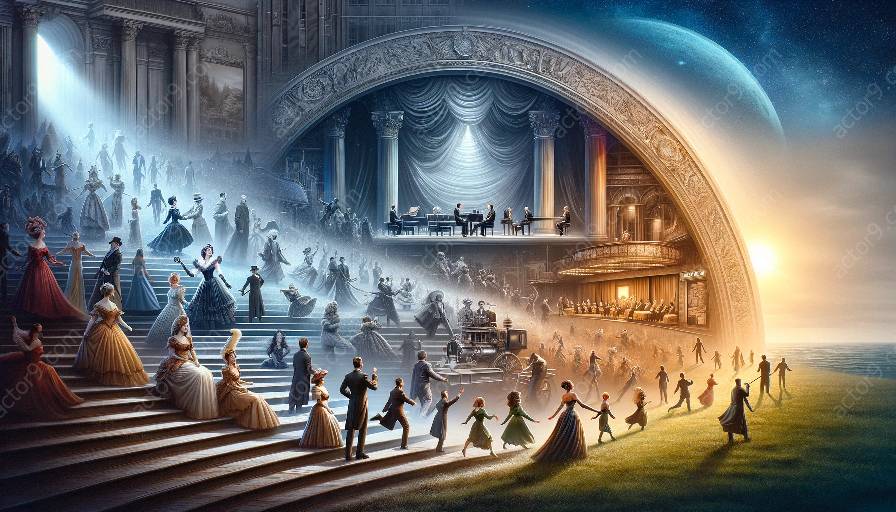Innovation in Musical Theatre: A Historical Journey
Musical theatre has a rich history that has been shaped by various key moments of innovation. These moments have not only transformed the art form but also influenced popular culture and entertainment.
1. The Birth of Operetta
One of the earliest key moments of innovation in musical theatre can be traced back to the birth of operetta. In the mid-19th century, operetta emerged as a lighter form of opera, featuring spoken dialogue, catchy melodies, and humorous storylines. This marked a significant departure from the conventional opera, paving the way for a more accessible and entertaining musical theatre experience.
2. The Works of Gilbert and Sullivan
The collaboration between librettist W.S. Gilbert and composer Arthur Sullivan in the late 19th century gave rise to a series of innovative musicals known as the Savoy operas. Their works combined witty lyrics, memorable tunes, and satirical themes, setting a new standard for musical storytelling and character development.
3. The Introduction of Show Boat
In 1927, the premier of 'Show Boat,' a groundbreaking musical by Jerome Kern and Oscar Hammerstein II, revolutionized the genre. Show Boat addressed serious social issues and featured a cohesive narrative, marking a pivotal shift towards integrating music, story, and character into a unified theatrical experience.
4. The Golden Age of Broadway
The mid-20th century witnessed the Golden Age of Broadway, characterized by an explosion of creativity and innovation. Musical theatre productions such as 'Oklahoma!' and 'West Side Story' introduced innovative choreography, intricate musical arrangements, and complex character development, solidifying the genre's place in popular culture.
5. The Impact of Technological Advancements
Advancements in technology have significantly transformed the landscape of musical theatre. From the introduction of amplified sound systems to sophisticated lighting and visual effects, technological innovations have enhanced the overall theatrical experience, enabling larger-than-life productions and immersive storytelling.
6. The Emergence of Concept Musicals
Concept musicals, such as 'Cabaret' and 'Company,' redefined the possibilities of storytelling in musical theatre. These innovative productions placed a greater emphasis on thematic coherence, non-linear narratives, and psychological depth, challenging traditional storytelling conventions and pushing the boundaries of the art form.
7. The Influence of Rock Musicals
The advent of rock musicals, exemplified by 'Hair' and 'Jesus Christ Superstar,' brought a new energy and attitude to musical theatre. With their electrifying scores and countercultural themes, rock musicals expanded the demographic appeal of musical theatre and paved the way for a diverse range of musical styles to be incorporated into theatrical productions.
8. The Era of Mega-Musicals
The late 20th century saw the rise of mega-musicals such as 'Les Misérables' and 'The Phantom of the Opera,' which set new benchmarks for spectacle, scale, and global appeal. These lavish productions leveraged advanced staging techniques, intricate set designs, and epic narratives, reshaping the economics and dynamics of musical theatre on an international scale.
9. The Digital Age and Beyond
In the digital age, musical theatre continues to evolve through innovative uses of multimedia, interactive storytelling, and online distribution platforms. With the convergence of technology and theatre, the future of musical theatre holds endless possibilities for immersive experiences and boundary-pushing experimentation.
Conclusion
The history of musical theatre is a testament to human creativity, ingenuity, and the enduring power of storytelling. From the birth of operetta to the era of mega-musicals and the digital age, key moments of innovation have propelled musical theatre into the cultural spotlight while continually redefining the boundaries of artistic expression.




































